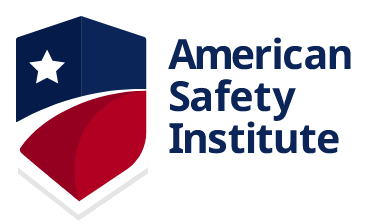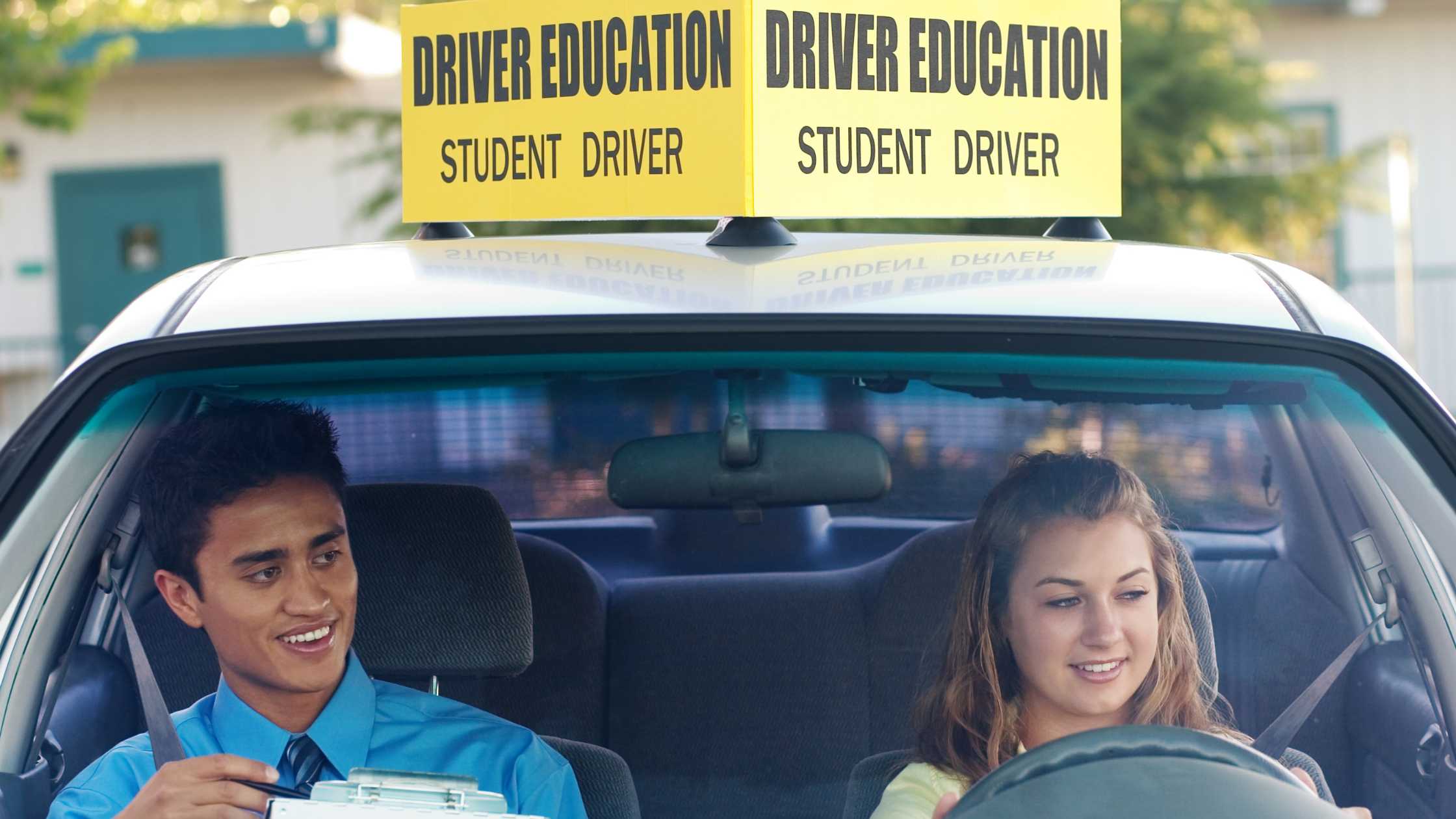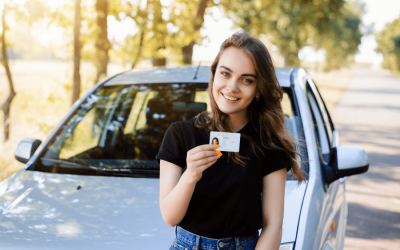Feeling overwhelmed as you guide your teen through the process of getting their first driver’s license? You’re not alone. With regulations that vary by state, procedures that change depending on which route you take, and a whole lot of educational options to choose from, it can be daunting!
We can help.
This blog is a parent’s guide to teen driver’s licenses. It outlines steps for first-time drivers, specific requirements to be on the lookout for, and tips to enjoy a smoother journey to your teen’s driving independence.
Step 1: Find Your State’s Learner’s Permit Requirements
Before your teen can hit the road, they’ll need a learner’s permit. To qualify they’ll need to:
- Be the right age (for instance, 15 in FL or 16 in NY)
- Have completed a state-approved driver education course
- Pass vision, hearing, and written knowledge tests
- Provide proof of identity, residency, and Social Security number
Some states have additional requirements. For example, in Florida, teens must complete a four-hour Traffic Law and Substance Abuse Education (TLSAE) course and a Permit Exam before they can qualify for a learner’s permit.
Be sure to consult with your local DMV for your specific state guidelines.
Step 2: Enroll in State-Approved Driver’s Ed
Driver education classes act like a teen driving guide. They equip teens with essential knowledge and skills for safer driving.
Courses typically cover:
- Traffic laws and regulations
- Defensive driving techniques
- The dangers of impaired and distracted driving
Online learning options are newer and provide more flexibility and convenience than older education models. This is particularly helpful for teens who have busy schedules, live in rural areas, or would benefit from self-paced learning
Whether you decide on an online or in-person option, just make sure the course is state-approved to meet your local licensing requirements.
Step 3: Apply for the Learner’s Permit
Once the education requirements are met, your teen can apply for their learner’s permit. Generally speaking, they’ll need to:
- Gather the necessary documents. This includes proof of identification (e.g., with a birth certificate or passport), their Social Security number, and proof of residency
- Complete learner’s permit application form provided by your local DMV
- Pass all required tests. This usually includes vision, hearing, and written knowledge tests
- Pay any applicable fees. These vary by state and usually cover the cost of testing and the creation of the permit itself
Step 4: Get Supervised Driving Practice
With a learner’s permit, your teen can begin supervised driving. Exciting!
Teens will need to practice driving with an adult (21 years or older) who has a valid driver’s license.
Usually, states require that teens log a specific number of hours of driving before they can apply for their driver’s license. And a specific portion needs to be completed at night. Florida, for example, requires teens to log 50 hours of supervised driving with 10 hours at night. New York also requires 50 supervised driving hours, but in that state, 15 hours need to be completed at night.
To keep driving practice on track, consider:
- Setting a schedule. Regular practice builds confidence and skill
- Using a driving log to track hours, so you know when your state requirements are met
- Focusing on variety. Exposing new drivers to different environments, weather, and traffic conditions will improve their overall competency quickly
Step 5: Prepare for the Road Test
Once supervised driving requirements are met, your teen can schedule their road test.
To get ready:
- Review driving skills. Make sure your teen is comfortable with all aspects of driving including highway navigation, parallel parking, and moving in and out of traffic
- Simulate test conditions. Practice the test route if you know it, along with skills you know need to be demonstrated during the exam
- Gather required items. That means bringing the right documentation, your learner’s permit, and a properly registered and insured vehicle for the test
Avoid these common mistakes:
- Incomplete stops: Always come to a full stop at stop signs and red lights
- Speeding: Strictly stay within posted speed limits
- Distracted driving: Don’t use electronic devices, adjust the radio or other settings, or try to hold a conversation during the exam
Step 6: Understand Graduated License Restrictions
Upon passing the road test, your teen may receive a provisional or intermediate license with certain restrictions. Often they include:
- Passenger limits: Restrictions on the number or age of passengers
- Nighttime driving: Curfews restricting late-night driving
- Cell phone use: Prohibitions on mobile device usage while driving
Step 7: Promote Safe Driving Habits
Earning a driver’s license is a significant milestone for your teen! And it’s just the beginning of a lifelong commitment to safe driving.
Encourage your teen to:
- Avoid distractions. Emphasize the dangers of texting, phone use, and other distractions
- Never drive impaired. Reinforce the importance of sober driving
- Continue learning. Consider enrolling in defensive driving courses to enhance skills and possibly reduce insurance premiums
Ready to Get Started?
With the right resources, your teen can gain driving independence safely and confidently in no time. A state-approved driver education course is the best way to prepare them for success.
Sign up for an online driver’s ed course today with American Safety Institute to get started on the right track!





